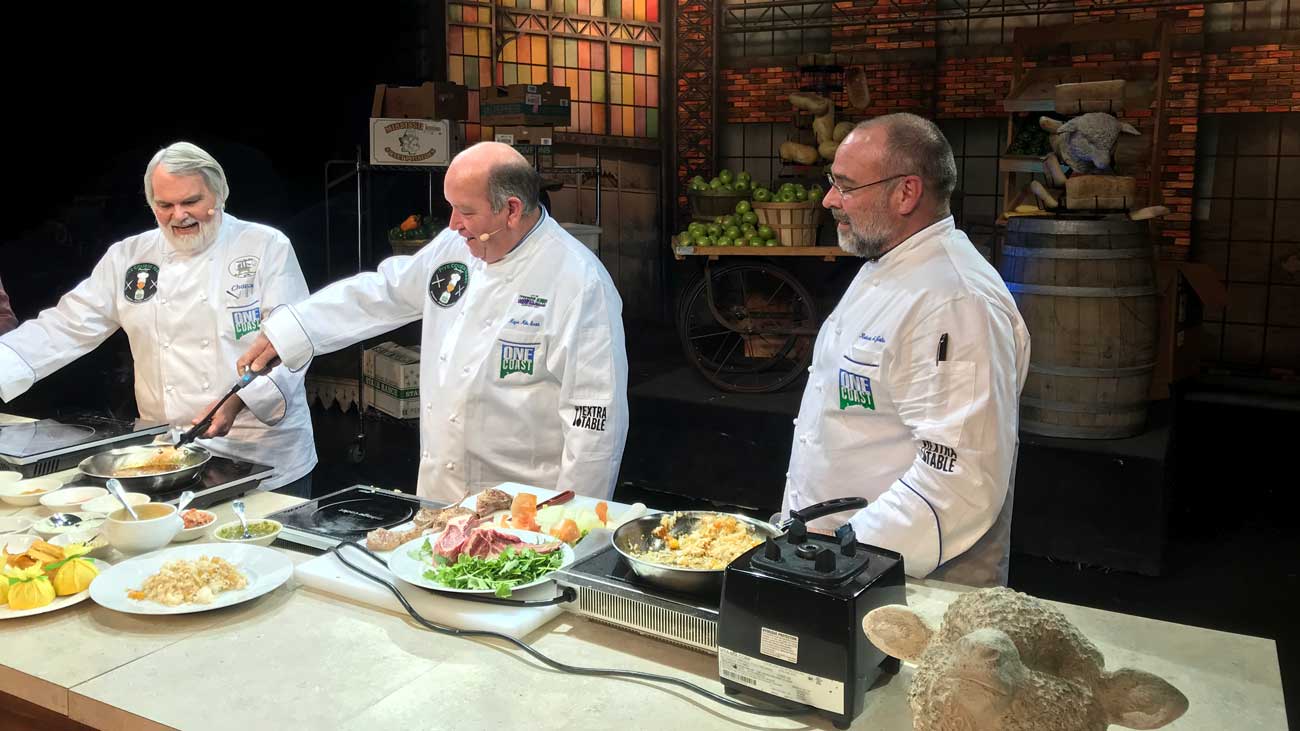The most popular interview question I encounter is “What is your favorite dish or meal?”
I was asked that question in an interview last week and I did what I usually do, which is divert the question to, “What is your favorite ingredient?” I try to avoid the “favorite dish or meal” question because my answer is so boring.
Being a chef and longtime restaurateur, I imagine people want to hear about an exotic dish with complicated preparation techniques and hard-to-find ingredients. That’s just not the case. The answer is simple, and it’s been the same answer all of my life.
My favorite meal and my favorite dish are the same— steak.
I love steak. It’s been that way since I was a kid. We didn’t eat a lot of steak in my childhood years except on special occasions. When we did eat steak it was usually cooked outside on a grill and not in a restaurant. Today, I still love to use my outdoor grill, but 90% of the steak I enjoy is in a restaurant, and the higher the grade of the steak the happier I am.
Grades of beef are designated by the quality of the beef. More than anything else, the amount of fat running through the muscle (marbling), determines the grade. The more marbling— and the younger the steer— the more flavorful and juicy the steak will be. It’s not about the fat on the steak. It’s about the tiny veins of fat running through the steak.
Beef is graded by the United States Department of Agriculture. The four most common grades of beef are:
Standard— this is low-quality beef and you probably don’t encounter this unless your eating canned beef stew of some type of canned chili.
Select— This is the most popular retail grade, and most run-of-the-mill grocery stores sell this grade. The marbling is minimal on select beef. Be careful though, some retailers will try to use a catchy name variation to sell select beef.
Choice— This is where most steakhouses live. Better grocery stores sell choice beef. The package will be marked “USDA Choice” and if it isn’t, and is just marked “ground beef” it is probably select grade. Some supermarkets get clever with the word “choice,” but if the steak is not listed as USDA Choice alongside the USDA shield then it is not true choice beef but a deceptive use of an adjective.
Prime— This is rarified air in the steak world. Less than two percent of all beef that is graded can be listed as “prime” beef. The marbling is intense and it makes a huge difference in the final flavor of the cooked product. Ruth’s Chris’ and Moreton’s steakhouses and the Purple Parrot Café serve prime beef.
Prime beef, like anything that is rare (excuse the pun), is expensive. Many people mistake prime “rib” as being prime-grade beef. Not true. Prime rib is the name of a cut of beef determined by the way it is cooked. Prime rib can be choice grade or select grade. It is simply a whole lip-on ribeye that has been slow-roasted in an oven. If one takes that same raw product and cuts through a cross section of the ribeye roast he or she will have ribeye steaks.
These days the marketing of breeds of cattle is becoming popular such as black Angus and Hereford. Though just because a restaurant or retailer lists it as “Angus” or Black Angus doesn’t determine the grade. If beef is sold as “Certified Angus Beef” then it is of a high quality and usually on the upper end of the choice grade. The same goes for “Certified Hereford Beef.”
But prime beef lives in a land all its own. On a father-son trip this past spring I introduced my son, another avid steak eater, to USDA Prime beef. As young men tend to do, he fell in love instantly. To me, it’s all about the grade of the beef. In a close second is the cut of beef.
The rare occasions when I do answer the question about steak being my perfect meal, the follow-up is usually, “What is your favorite cut?”
There are many people who judge the quality of a steak by the size and shape of the cut. These are mainly filet mignon eaters. I have known people who would choose a two-inch straight up and down select filet mignon over a smaller, slightly ill-formed prime filet. Not even close. Size doesn’t matter
My rule of thumb for cuts of beef is easy. If I am at a steakhouse that serves USDA Choice beef, I order a ribeye. That is where the marbling will be best. If I’m eating USDA Prime beef (there aren’t too many true USDA Prime beef steakhouses), I order a New York Strip.
I never eat a filet, it’s just not my cut. However, a USDA Prime filet is a beautiful piece of beef, and for those who love a filet, this is your last-meal-request dish.
My favorite ingredient, by the way, is jumbo lump crabmeat. When I can top a prime steak with jumbo lump crabmeat, then the question I tend to avoid becomes very easy to answer.
Carpetbagger Steaks with Crab Meat Stuffing
6 New York Steaks, 8-10 ounces each
2 Tbl Steak Seasoning
Sprinkle both sides of the steaks with the steak seasoning. Grill over direct high heat until desired doneness is reached, approximately 8-10 minutes for medium rare. Remove steaks from the grill and allow to rest five minutes. Using a sharp knife, butterfly the steak from the outer edge along the center forming a pocket. Fill the pocket with the crabmeat stuffing allowing some to spill out onto the plate. Serve immediately.
Crabmeat Stuffing
1 Tbl olive oil
1/2 cup shallot, thinly sliced
2 cups button mushrooms, slice thin
1/3 cup green bell pepper, julienne
1 tsp creole seasoning
1/2 tsp kosher salt
1/2 cup white wine
1 Tbl fresh lemon juice
3/4 cup green onions, thinly sliced
1 cup unsalted butter, cut into cubes
3/4 lb all lump crab meat
Heat olive oil in a large sauté pan over medium heat. Sauté shallots, mushrooms, green bell pepper, Creole seasoning and salt for 8-10 minutes. Add wine and lemon juice and allow liquid to reduce by half. Stir in the green onions. Start adding butter cubes, a few at a time, while stirring constantly with a wire whisk. Once all of the butter has been incorporated, gently fold in the crab meat. Keep warm until ready to fill the steaks.
Yield:
6 servings



